It seems that every time I get round to doing another post about Cities: Skylines, they've released a new patch or expansion. This time it was the After Dark DLC, which I haven't bought... yet... but we'll see a big visual difference in this AAR anyway thanks to the devs very generously including the day/night cycle in the free patch accompanying the game, very wisely helping to not split the player base and the modders between those who own the DLC and those who don't. Last time covered the slow start of my city - the concept being a big focus on public transport, and having all the main industrial and commercial areas in one big urban space, while everyone lives in smaller towns and villages spread across the rest of the map.
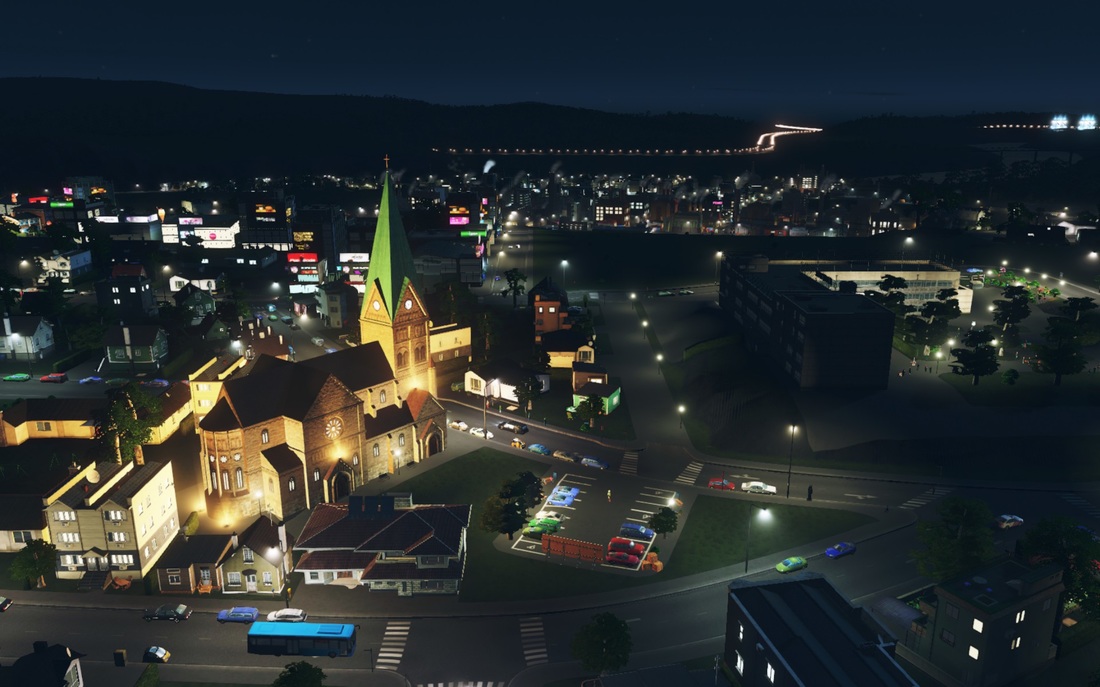
The night is certainly pretty, though it can make laying out infrastructure a bit trickier. On balance, it's worth it to be able to appreciate your creations at night. The church is a mod asset, already updated to work with the DLC. It's very brightly lit, but it does make them good landmarks in the dark.
The first big step was unlocking High Density residential zoning, and with it the ability to much more quickly increase my population size, and really distinguish between the little villages and their Low Density houses compared to the towns with a core of High Density space. At the same time I unlocked the metro system, and built one in the city centre - I had to increase the tax rate on Low Density residential to 11%, up from the standard 9% in order to bring in the money for this. Normally I don't need to adjust the tax rates in my block cities, since everything is so clustered together that it's relatively easy to provide the various necessary civic services in a cost effective manner. This totally goes out of the window when you have such a spread out population, but they seem happy enough to pay the extra 2%.
Also helpful is the incredible patience of my virtual citizens. One of the incidental features I love is the ability to track a person in your city and automatically follow them as they go about their business - it reminds me of time spent in Transport Tycoon navigating my own transport network, waiting for trains and buses as I attempted to travel from one random town to another. What I've found in my city is that you can spend quite some time waiting for a bus or train, and at the busiest stops you'll likely have to watch a few pass by fully loaded before you can catch one. They're much more willing to walk moderate distances and use public transport than I gave them credit for (once you remove the temptation of driving by making the straightforward routes into the city bus only).
I bought more space in the north, and added another few villages and a large town on the top of the hill. This was much too far away for a direct bus line to the city centre, so instead I use a more local line that connects the nearby villages to the town, which in turn has bus connections to adjacent towns. It was around this point that I unlocked railways - perfect timing, since the bus queues in the towns were becoming intolerable. I had to rip up a bit of industrial zone to make space for a central station, but it's well worth it. Now the people living in the villages only have to get a bus to their nearest train station, and they have a direct route into the city where they can switch to the metro or catch one of the inner city buses, rather than needing to switch through multiple bus lines or deal with long, long bus rides.
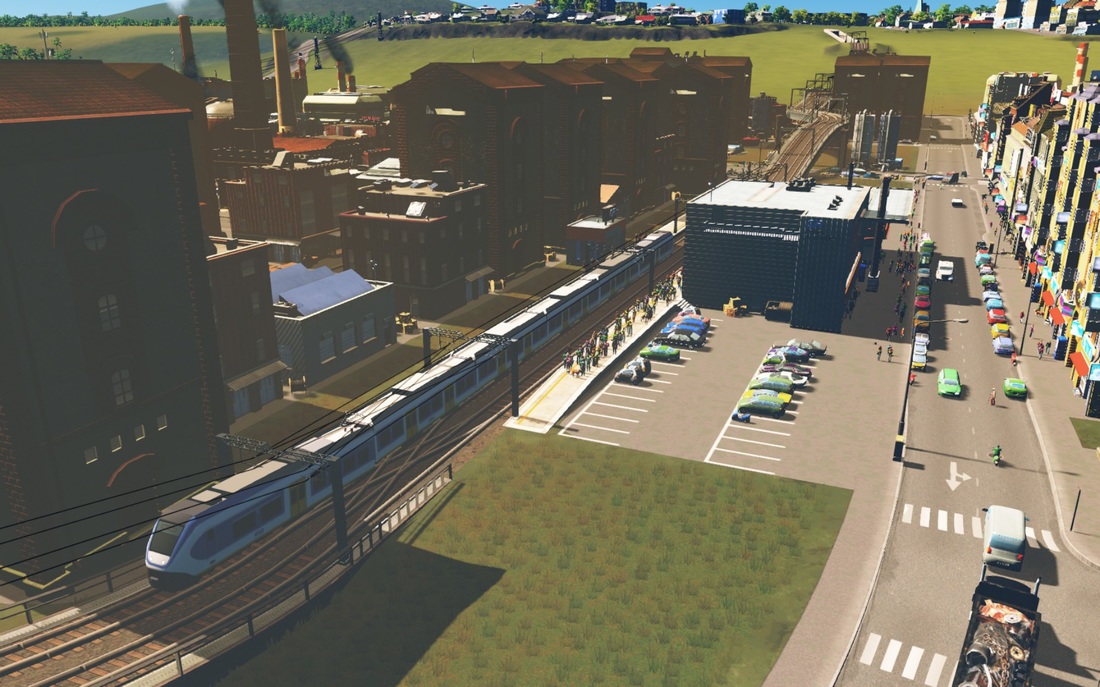
The station in the city centre. Though it's very effective, it doesn't look all that impressive. I need to pick out one of the better looking modded stations instead, I think. Some of them even support multiple tracks, which would be helpful to stop tourist trains from outside the area clogging up my already busy local line.
One challenge I had was choosing where to expand my city centre. Eventually I decided to let one of the villages succumb to the expanding city, and replaced the low density housing there with offices. I was originally going to describe this as urban sprawl, but after skimming through the wikipedia article it seems that might be an inaccurate use of the term. However, what I'm trying to build here is in some ways very much an example of urban sprawl - some indicators the article identifies are highly segregated residential, commercial and industrial areas, single purpose zones (which is essentially what my 'villages' and 'towns' are), and an increasing reliance on automobiles for people to be able to live. This is certainly something my city would require, if it wasn't for my focus on public transport, and the willingness of people to make use of it, despite certain flaws.
I add more industrial area in the west, and replace some of the older industrial in the centre with commercial. Huge demand for the new offices zone (which is somewhat irritatingly mixed in with 'industrial demand', despite being rather different. I assume there's somewhere I can get a breakdown of that demand bar to see whether it's actually offices or industrial that is desired, but I haven't found it yet). Finally, having already built a railway bridge to the south, I construct two road bridges and plan out a whole new area to be dedicated to offices and commercial. This area has a train station and a metro system, but no buses. I'll probably connect the north side metro with this new south bank underground at some point, but since anyone visiting is already going to have to commute a fair distance, I'd assume most people will arrive via the train station anyway.
And that's about it for my last play session. This is pretty much my experience of Cities: Skylines - gradual expansion with interludes to ensure your transportation links are working properly and without huge traffic jams anywhere (I should also state that this is much more fun and more satisfying than that summary makes it sound). A big advantage of public transport is that there doesn't appear to be a particular limit to how many people can wait at a train station or even a bus stop, so unlike with cars even if your system is working badly, at the very least it won't clog up anything else when it gets overwhelmed.
I'll keep working on the city, but it seems unlikely that I'm going to run into any serious challenges that would make interesting reading. The spread of people and zones has required me to think a bit more about how to distribute services like police and medical coverage, but given how easy it is to make money, the solution is usually just throwing down a new police station or whatever is needed. The current takeaway is that having very separated residential areas with poor road links works just fine if your public transport is decent. So hurray, I guess.
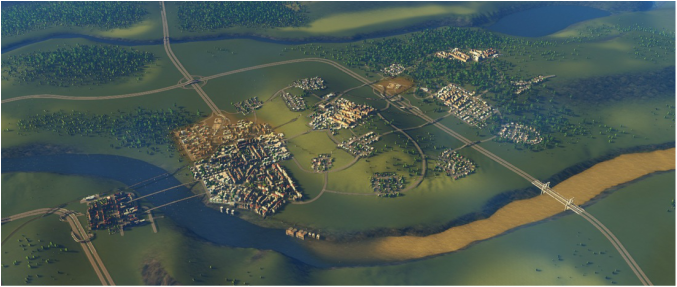
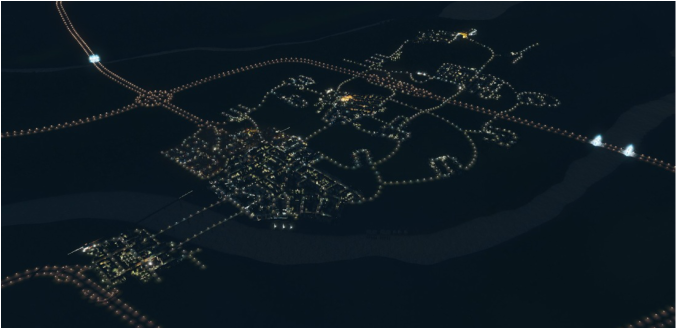
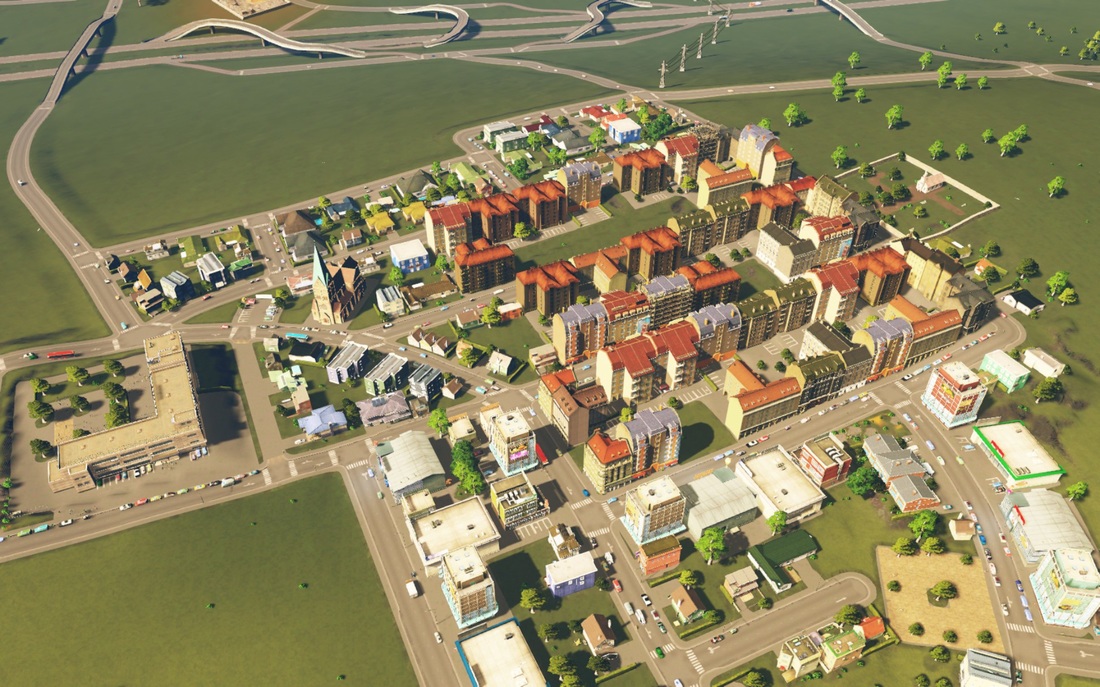
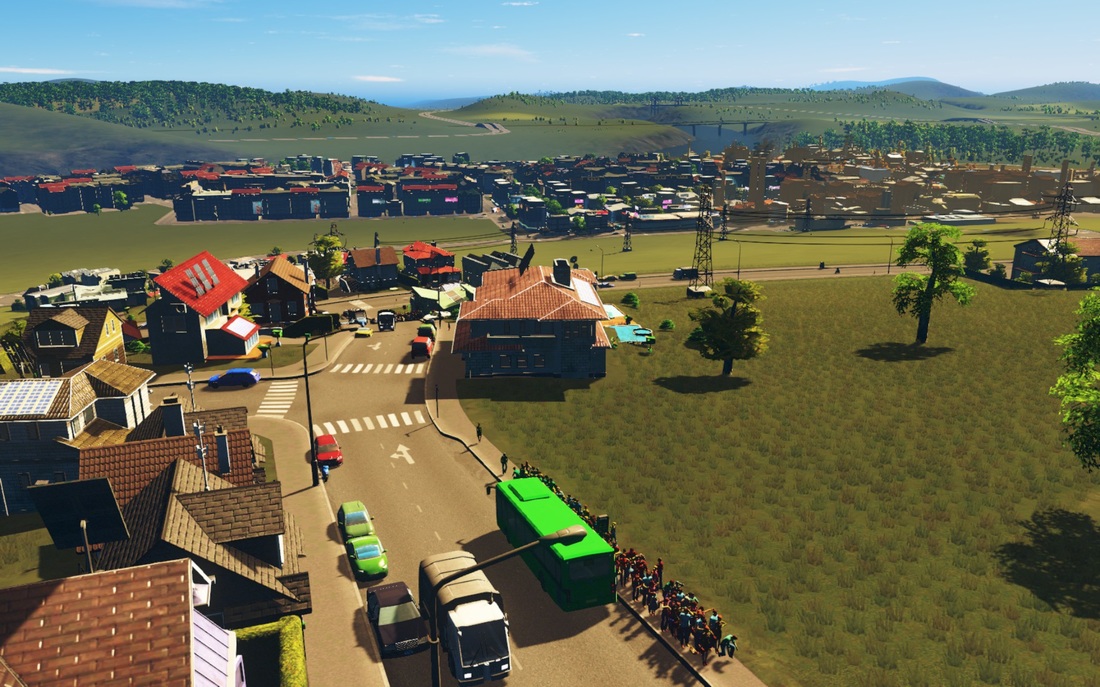
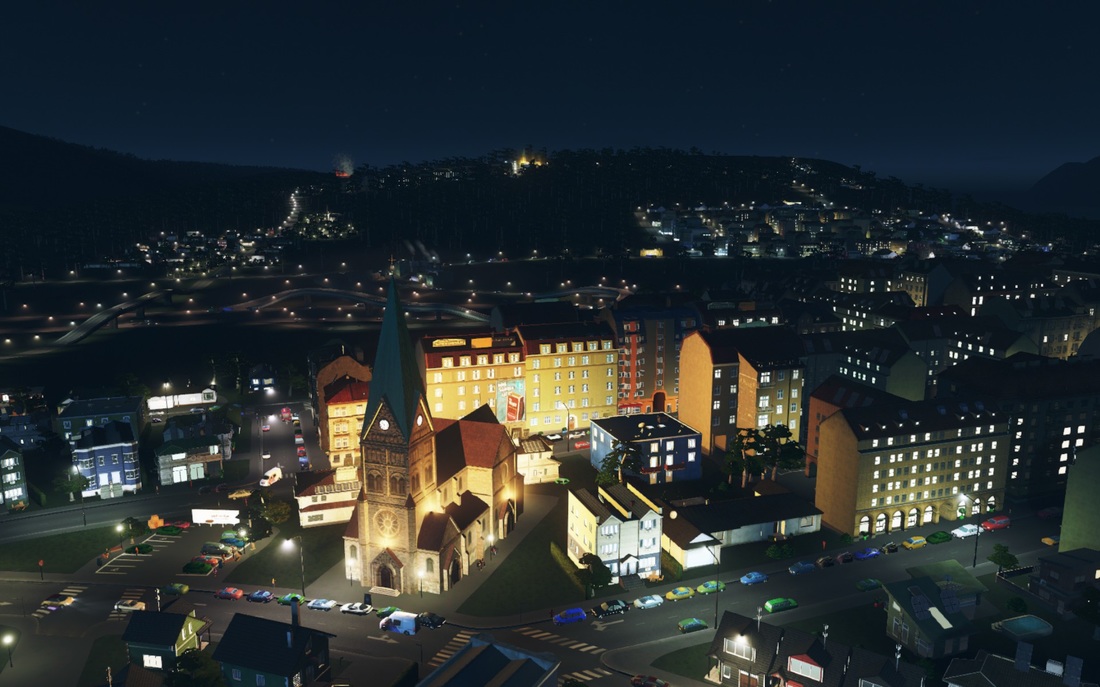
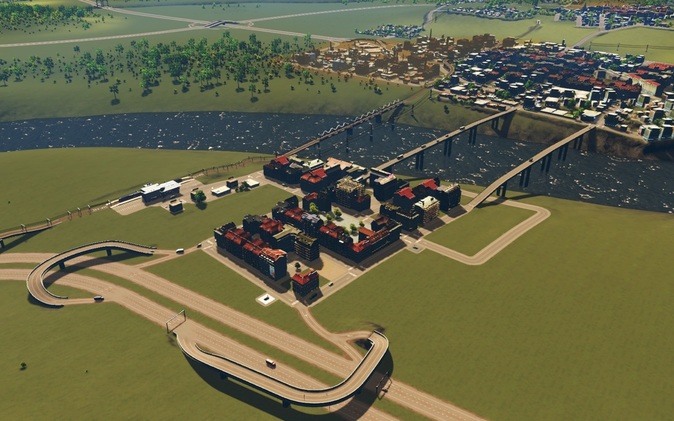
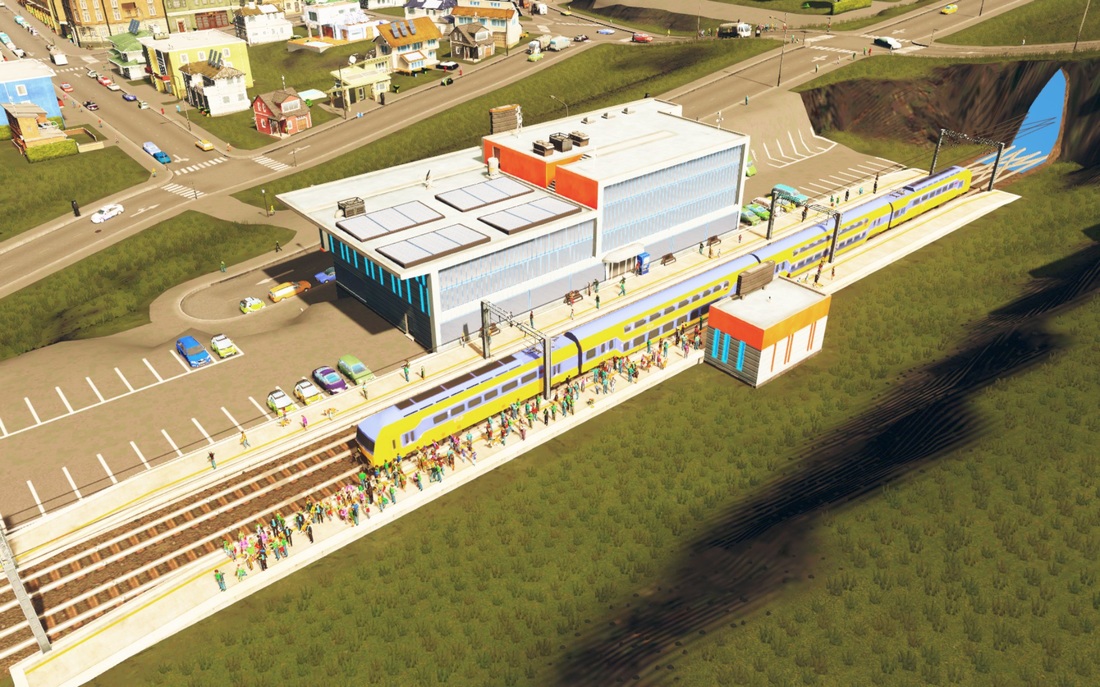
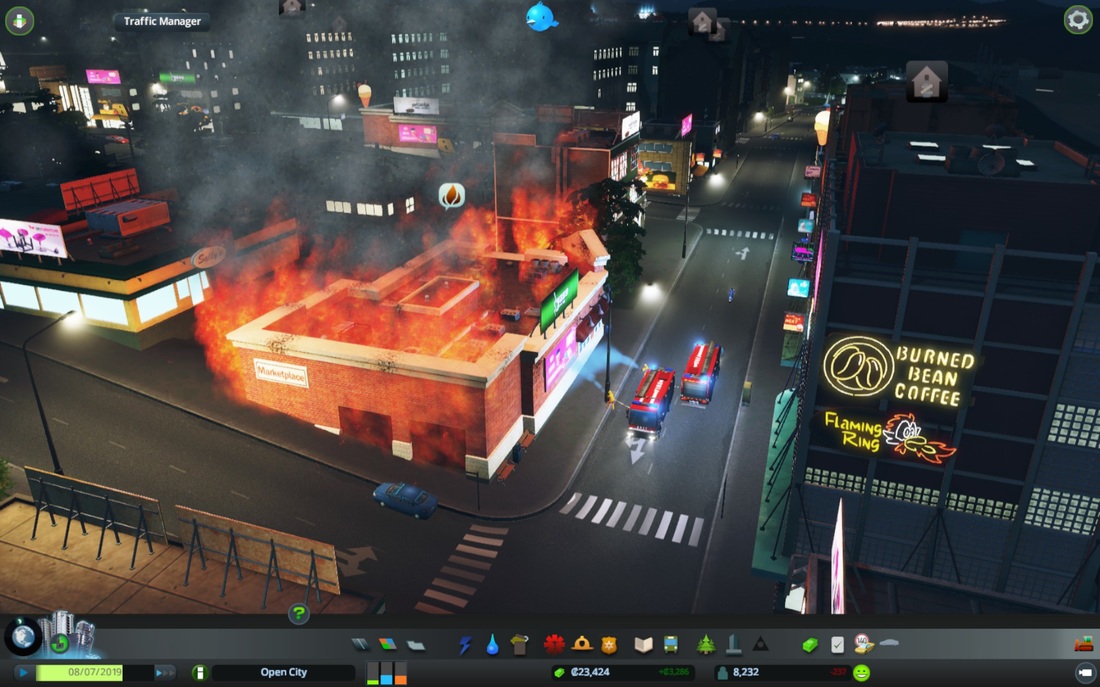
 RSS Feed
RSS Feed